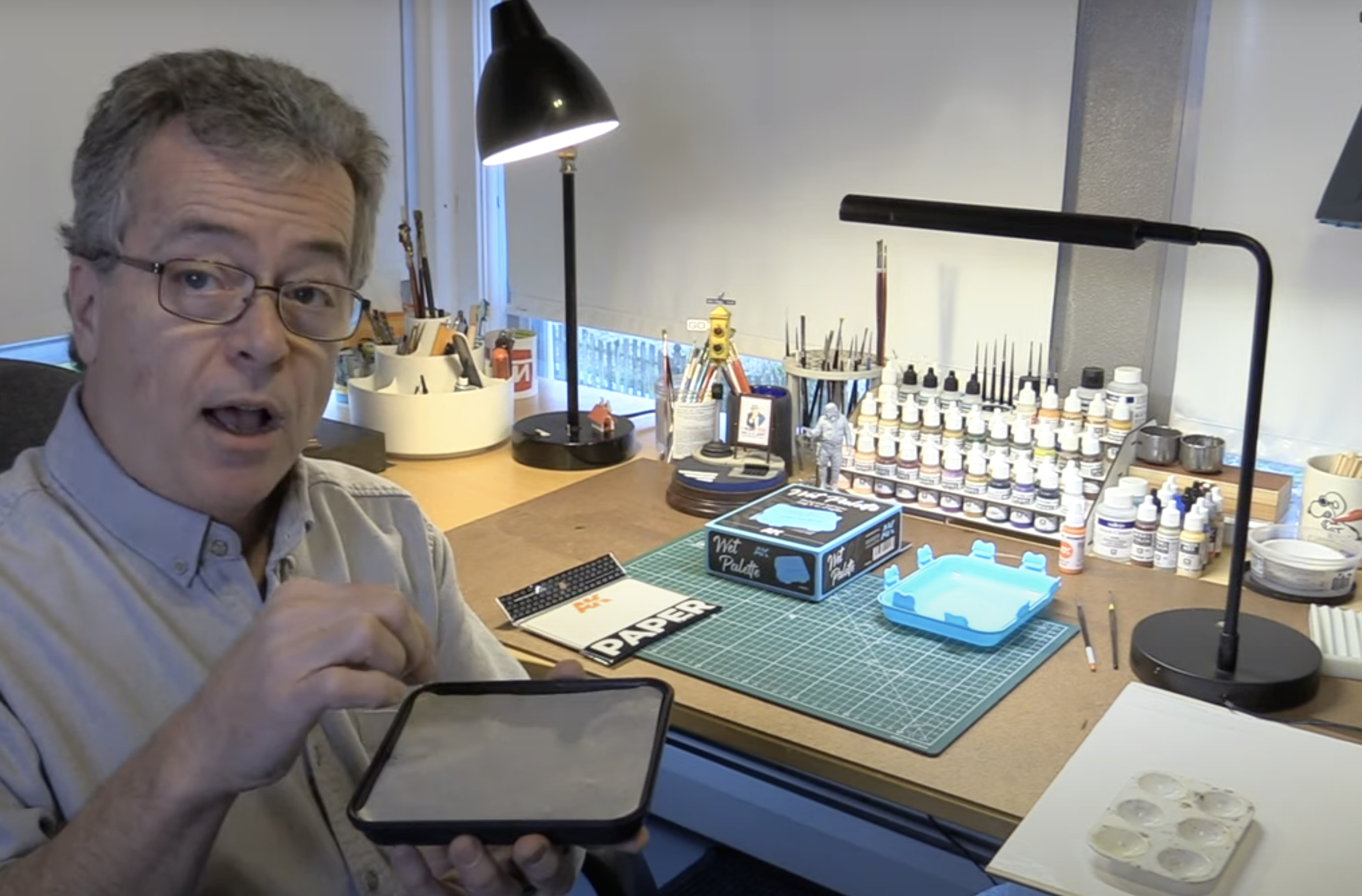How to Use a Wet Palette for Modeling
Posted by MegaHobby.com on Sep 3rd 2024
The wet palette is a revolutionary tool in the realm of figure painting, particularly for managing acrylics and water-based paints. Its setup, advantages, and maintenance are pivotal for artists seeking prolonged paint freshness and ease of use.

Introduction to the Wet Palette: Wet palettes comprise an airtight container, sponge, and palette paper. Unlike traditional palettes or paint pots, this tool offers an innovative solution to the quick drying of acrylics and water-based paints, enhancing the painting process significantly. For our example here, we are using AK Interactive’s wet palette, but you can use any wet palette you deem preferable.
Setting Up the Wet Palette: Preparing the wet palette is a straightforward process. Begin by saturating the sponge thoroughly with water. Once damp, place it at the bottom of the airtight container. Over the sponge, position a sheet of palette paper, ensuring it adheres properly by adding a touch more water to help it flatten out. This simple setup allows for the maintenance of paint freshness and workability over extended periods.
Advantages of the Wet Palette: The wet palette boasts several distinct advantages over conventional painting setups. It keeps paints fresh and workable for extended durations, offering more time for paint manipulation, thinning, and creating custom color mixes. The palette's airtight seal prevents paints from drying out, making it a preferred choice for preserving custom paint mixes, ultimately eliminating the frustration of remixing colors.

The wet palette also simplifies the thinning process of paints, maintaining their consistency while preventing them from drying out too quickly, ensuring smoother and more precise brushwork. Its design fosters a more controlled environment for paint preservation, enhancing the overall painting experience.
Maintenance and Longevity: The wet palette's longevity and continued efficacy depend on proper maintenance. After several days, if there's residual paint on the palette, follow these steps: remove the sponge, rinse it thoroughly, clean the container, wet the sponge again, and add a fresh sheet of palette paper. Seal the container airtight, and for extended paint longevity, consider refrigerating the palette, which further extends the paints' shelf life and maintains their workability.
Conclusion: In summary, wet palettes redefine the painting experience for artists and modelers working with acrylics and water-based paints. Its ability to maintain paint freshness, facilitate easy paint manipulation, and preserve custom color mixes make it an invaluable asset in the artist's toolkit. By offering prolonged paint usability and convenience, this tool enhances the creative process and allows us to focus more on our craft than worrying about paint drying out too quickly.

